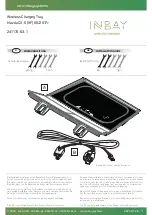
arm or behind your back. If possible, adjust
the seat belt to the appropriate height.
R
the lap belt is taut and passes across the lap
as low down as possible
The lap belt must always be routed across
your hip joints and never across your abdo-
men. This applies particularly to pregnant
women. If necessary, press the lap belt down
into your hip joints and pull tight with the
shoulder section of the belt.
R
the seat belt is not routed across sharp, poin-
ted or fragile objects
If you have such items located on or in your
clothing, e.g. pens, keys or spectacles, store
these in a suitable place.
R
only one person is using a seat belt
Infants and children must never travel sitting
on the lap of a vehicle occupant. In the event
of an accident, they could be crushed
between the vehicle occupant and seat belt.
R
objects are never secured with a seat belt if
the seat belt is also being used by one of the
vehicle's occupants
Also ensure that no objects are placed
between a person and the seat. e.g. a cush-
ion.
Seat belts are intended only to secure and
restrain vehicle occupants. Always observe the
"Loading guidelines" for securing objects, lug-
gage or loads (
Y
page 288).
Fastening and adjusting the seat belts
Observe the safety notes on the seat belt
(
Y
page 43) and the information on the correct
use of the seat belt (
Y
page 44).
Basic illustration
X
Adjust the seat (
Y
page 106).
The seat backrest must be in an almost
upright position.
X
Pull the seat belt smoothly from the belt out-
let.
X
Engage seat belt tongue
;
in belt buckle
:
.
The seat belt on the driver's seat and the
front-passenger seat may be tightened auto-
matically; see "Belt adjustment"
(
Y
page 45).
X
If necessary, pull upwards on the seat belt in
front of your chest so that the belt sits tightly
across your body.
The shoulder section of the seat belt must
always be routed across the centre of the shoul-
der. Adjust the belt outlet if necessary.
X
To raise: slide the belt outlet upwards.
The belt outlet will engage in various posi-
tions.
X
To lower: hold belt outlet release
=
and slide
the belt outlet downwards.
X
Let go of belt outlet release
=
in the desired
position and make sure that the belt outlet
engages.
Releasing seat belts
!
Make sure that the seat belt is fully rolled up.
Otherwise, the seat belt or belt tongue will be
trapped in the door or in the seat mechanism.
This could damage the door, the door trim
panel and the seat belt. Damaged seat belts
can no longer fulfil their protective function
and must be replaced. Visit a qualified spe-
cialist workshop.
X
Press release button in belt buckle, hold belt
tongue firmly and guide the seat belt back.
Belt adjustment
Seat-belt adjustment is an integral part of the
PRE-SAFE
®
convenience function. With this
function, the driver's and co-driver's seat belts
are adjusted to the upper body of the vehicle
occupant.
The belt strap is tightened slightly when:
R
the belt tongue is engaged in the buckle and
R
the ignition is switched on
The seat belt adjustment will apply a certain
tightening force if any slack is detected between
the vehicle occupant and the seat belt. Do not
Occupant safety
45
Saf
ety
Z
















































